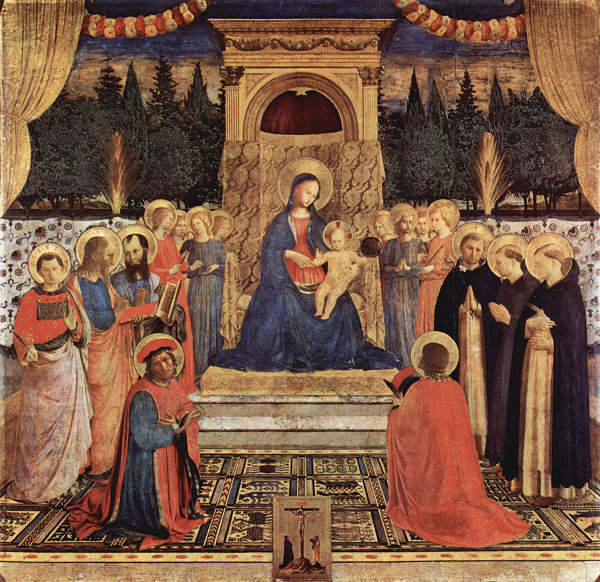Hi Yohann,
You might be right, or not: these early borderless rugs can sometimes be confused with tiles and vice versa: Except for outdoor views, the ground of most Renaissance paintings is laid with tiles. They are much more frequent than rugs or precious textiles. Tiles are mostly undecorated or carry a simple geometrical design either strictly repeated or alternated. However, when researching paintings for future threads, I had sometimes a doubt and played their classification as "rugs" or "tiles", with heads or tails, especially in a few Spanish paintings.
Your (superbly documented) hypothesis (in the new thread) about animal-decorated inlaid tiles is well worth considering. Filiberto's counter argument is valid too, especially coming from a pure bred Fiorentino


FIG. 1438-1440. Fra Angelico, Virgin and Child, S. Marco Museum, Florence.
Even the full picture of Fra Angelico's painting does not allow to be 100% sure. If it is a rug as I am still inclined to believe, (sheepishly following the opinion of a couple of art historians) it is indeed a huge one. There is what seems to be a rug border though (but yes it could also be part of a pattern of tiles).
Indeed , Al Andalus certainly has played an important role at the time, for all sorts of precious textile. And so did Sicily where King Roger, Frederick II and his son, in particular, favored production of silk textiles by their still mostly arabic and byzantine population. I have seen no mention of Sicilian rugs, so far, but...
Best regards
Pierre